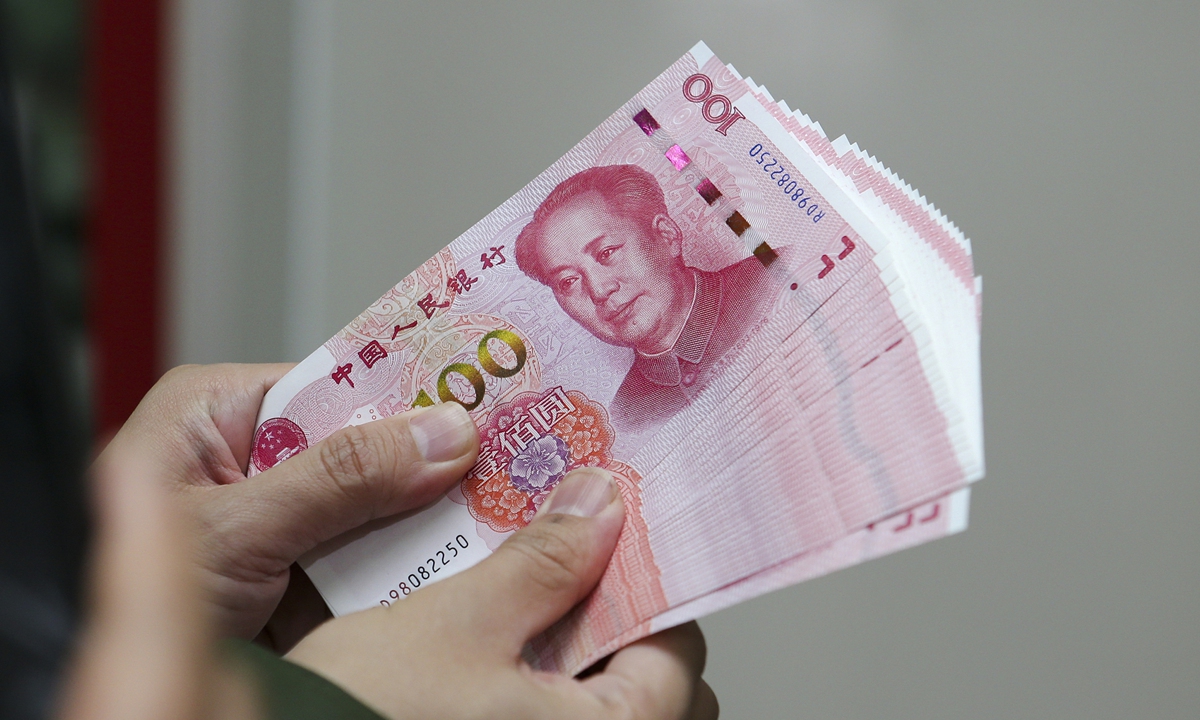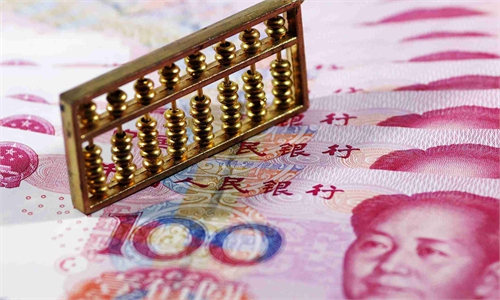
RMB Photo:VCG
As the yuan remained the world's fourth most active currency for a third month in January, a symbol of steady progress in its internationalization, analysts said that in the medium term, the yuan should benchmark the internationalization level of the euro, which is currently the second most-traded currency.
Analysts also pointed out that the further internationalization of the yuan can be realized through expanding its use in global trade settlements and financial transactions, as well as developing offshore businesses and markets.
They noted that there is a solid foundation for the yuan's further internationalization, fueled by China's stable economic growth and foreign trade scale.
According to data that global payment services provider Society for Worldwide Interbank Financial Telecommunication (SWIFT) released on Thursday, the yuan remained the world's fourth most active currency in January, accounting for 4.51 percent of global payments, surpassing the yen for a third consecutive month.
The value of yuan payments increased by 16.32 percent month-on-month, and the yuan's share in global payments rose from 3.6 percent in October to 4.61 percent in November, reaching fourth place for the first time since January 2022, when the yuan's share was 3.2 percent, SWIFT data showed.
In January, the US dollar remained the world's most-traded currency, accounting for 46.64 percent of global payments. With a share of 23.02 percent, the euro took second place, followed by 7.1 percent for the pound, according to SWIFT.
The international level of the yuan has surpassed the pound and the yen in many ways, and in the medium term, the internationalization of the yuan should be benchmarked against the euro, Zhao Qingming, a Beijing-based veteran financial expert, told the Global Times on Thursday.
"Maintaining stable economic growth and strengthening economic, trade and investment exchanges with other countries will provide the basis for promoting the internationalization of the yuan," said Zhao.
To promote the internationalization of the yuan, the first step is to expand the scale of the yuan's use in international trade settlements, Tu Yonghong, a professor with the International Monetary Institute at Renmin University of China, told the Global Times on Thursday.
"Especially for private enterprises, which account for 70-80 percent of China's total foreign trade, the facilitation of using the yuan for trade settlements should be enhanced," said Tu, adding that such services and exchange rate risk management tools should be provided to merchants on e-commerce platforms, which are playing an increasingly important role in China's foreign trade.
Tu stressed that efforts should be made to increase the share of the yuan in global financial transactions to give further play to the financing function of the currency.
"In addition, we should further promote the development of offshore business and create more offshore markets. At the same time, we should issue more free trade zone (FTZ) offshore bonds in the China (Shanghai) Pilot FTZ or in other FTZs within China to provide more financing services for multinational companies," said Tu.
Analysts are optimistic about the yuan's internationalization process.
China's status as a major economy and trading country will provide broad prospects for the yuan's internationalization, Zhao said.
Zhao said that the internationalization level of a currency is usually accompanied by an increase in a country's economic power and international influence.
The Spanish dollar in the 17th and 18th centuries, the British pound before the First World War, and the US dollar after the Second World War all became international currencies on the condition that their countries had a strong economic base.
The internationalization of the yuan has entered a new stage.
More than 80 overseas central banks or monetary authorities have held yuan reserves, according to the latest report on yuan internationalization from the People's Bank of China (PBC), the central bank.
Cross-border yuan settlements of trade in goods accounted for 24.4 percent of total cross-border settlement of trade in goods in the first nine months of 2023, the highest level in recent years, according to the PBC report.
As of the end of 2022, yuan reserves held by global central banks were equivalent to $298.4 billion, accounting for 2.69 percent of total reserves, up 1.62 percentage points from 2016, when the currency first joined the IMF's Special Drawing Rights.

